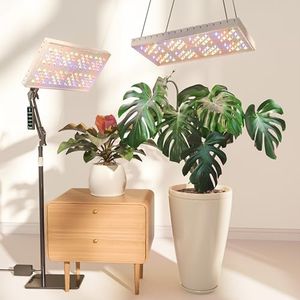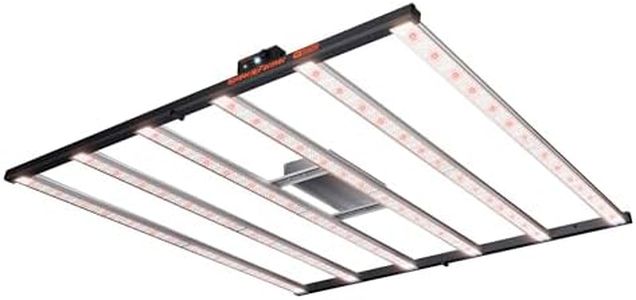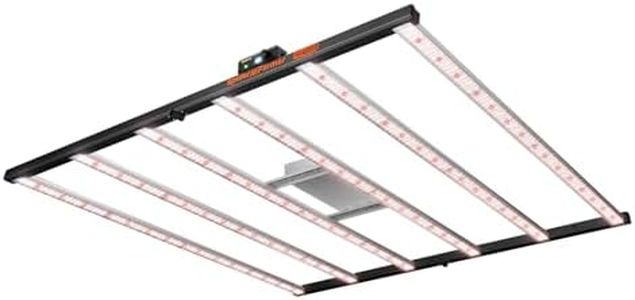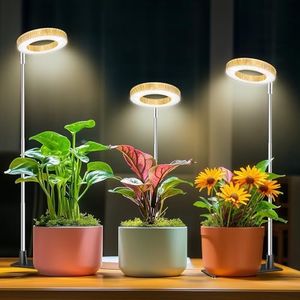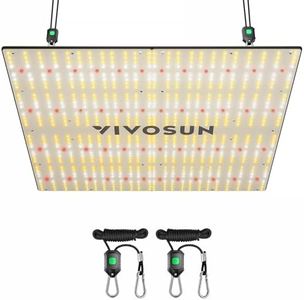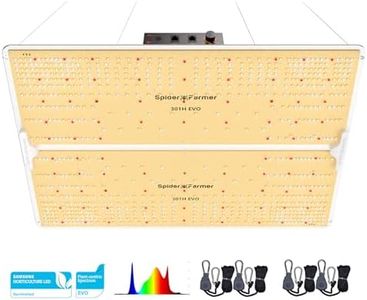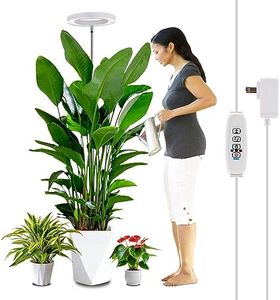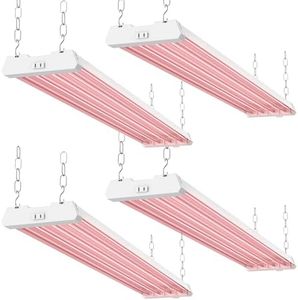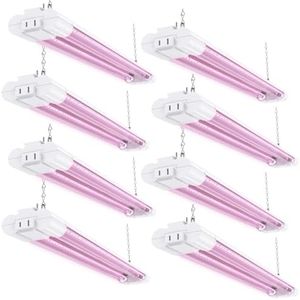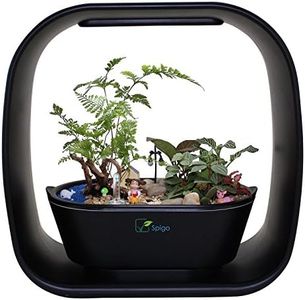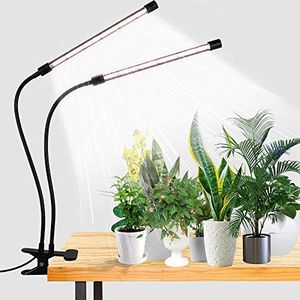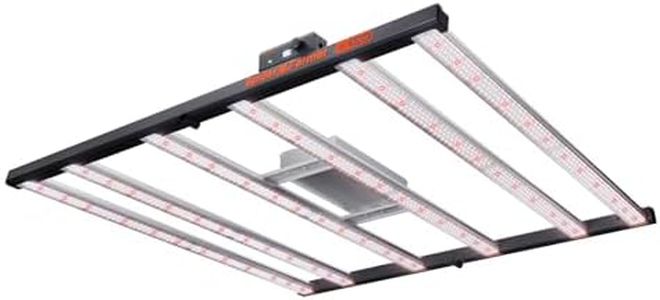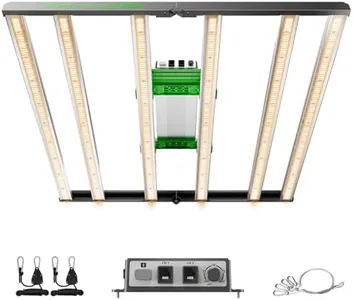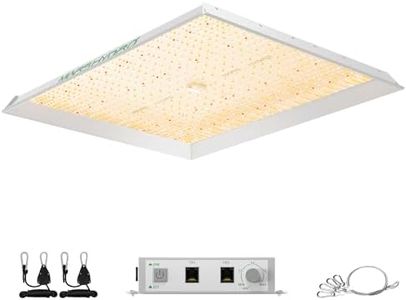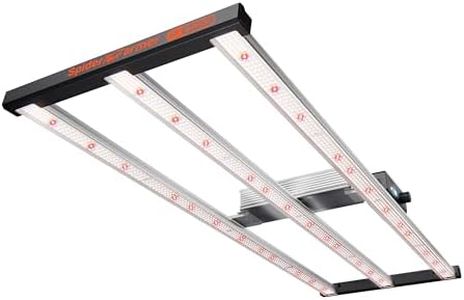10 Best Led Grow Lights 2025 in the United States
Our technology thoroughly searches through the online shopping world, reviewing hundreds of sites. We then process and analyze this information, updating in real-time to bring you the latest top-rated products. This way, you always get the best and most current options available.

Our Top Picks
Winner
Spider Farmer G8600 Cost-Effective 800W LED Grow Lights, 4x4ft/5x5ft Coverage Commercial Bar Style LED Grow Lamp for Indoor Plants Vertical Farming, 2025 Upgraded Smart App Control
Most important from
328 reviews
The Spider Farmer G8600 is a strong choice for indoor plant growers looking for an efficient and cost-effective LED grow light. It uses high-quality Bridgelux diodes to provide an 800-watt power output with a high Photosynthetic Photon Flux (PPF) of 2283 µmol/s and an efficient photon efficacy (PPE) of 2.85 μmol/J. This means it delivers plenty of usable light energy for plants while keeping electricity use reasonable. It covers a 4x4 to 5x5-foot growing area, which fits well for medium-sized grow tents or racks, making it suitable for both hobbyists and small commercial setups. The light spectrum is full and balanced, supporting all growth stages.
The light bars are foldable and plug-and-play, so setup is simple and quick without tools. A helpful digital display and dimmable settings let you easily adjust brightness through growth stages, and you can control multiple units together. The included smart app adds convenience by allowing remote control and scheduling, which is great for busy growers or those who travel. Heat output is managed well with aluminum housing, keeping temperatures stable and reducing the need for extra cooling.
One downside is its weight of about 28 pounds, meaning it might need a sturdy mounting solution. Also, while 800 watts is powerful, it may be more than needed for very small spaces. The long 5-year warranty and U.S.-based support add confidence in its durability. The Spider Farmer G8600 meets the key specs that indoor growers want—strong, efficient light output with good coverage, smart controls, and reliable build quality—making it a solid option for serious plant growing.
Most important from
328 reviews
Spider Farmer SE7000 730W LED Grow Lights, Samsung LM301H EVO Diodes, 2025 Upgraded Remote App Control, 5x5ft Coverage Dimmable Daisy Chain Commercial Bar Style LED Growing Lamp, Vertical Farming
Most important from
908 reviews
The Spider Farmer SE7000 is a powerful LED grow light drawing 730 watts, designed with Samsung LM301H EVO diodes known for energy efficiency and strong light output. It provides a good coverage area of 5x5 feet for full-cycle plant growth and about 4x4 feet for vertical farming, making it suitable for medium to large indoor gardens or commercial setups. The light has a high Photosynthetic Photon Flux Density (PPFD) of 2146 µmol/s and an impressive efficacy of 2.9 µmol/J, meaning it delivers strong, efficient light that plants can use well for photosynthesis.
One of its standout features is the foldable design and ease of installation, which simplifies setup. The ability to dim the light with a clear digital display allows precise control to match plant growth stages. It also supports daisy chaining up to 50 units, controlled via a master light, which is helpful for expanding grow operations. The inclusion of a remote app adds convenience by letting you adjust light schedules and brightness from anywhere.
Heat output is managed by an aluminum build, which helps in dissipating heat, so some ventilation is still advisable. The light's lifespan is backed by a 5-year warranty with local service in several countries, providing peace of mind for long-term use. The SE7000 suits serious growers needing efficient, customizable lighting over a sizeable area. Its smart controls and sturdy build enhance usability and durability. However, at 730 watts and weighing nearly 23 pounds, it requires a stable mounting point and adequate power supply. This light is more of an investment for dedicated growing rather than casual use.
Most important from
908 reviews
Aokrean Grow Light, 48 LEDs Full Spectrum Plant Lights for Indoor Growing, Height Adjustable Wood Grain Plant Grow Light with Base, 3 Optional Spectrums, Auto Timer 6/12/16Hrs, 5 Brightness
Most important from
3194 reviews
The Aokrean Grow Light is designed primarily for indoor plant enthusiasts seeking both effective lighting and a stylish appearance. It features 48 LEDs with a full spectrum including white, warm white, and red light options, supporting different plant growth stages. Brightness is adjustable across five levels, and the light offers three timer settings (6, 12, or 16 hours), allowing easy customization of light exposure based on plant needs.
Its telescoping pole extends up to 26 inches and can rotate, enabling coverage of multiple plants or angle adjustments as they grow. The light is energy-efficient and produces minimal heat due to the use of LEDs, making it safe for continuous use without overheating. The imitation wood grain design and compact size allow it to function as a decorative piece suitable for living rooms or offices. However, it is not waterproof and should be kept indoors away from moisture. The stand requires stability from a flower pot to remain upright and relies on a nearby power outlet due to its corded design.
With included accessories like power adapters and bases for three lights, this product suits indoor gardeners looking for flexible and aesthetically pleasing grow lights. It performs well for small collections of plants rather than large indoor gardens and enjoys solid customer satisfaction.
